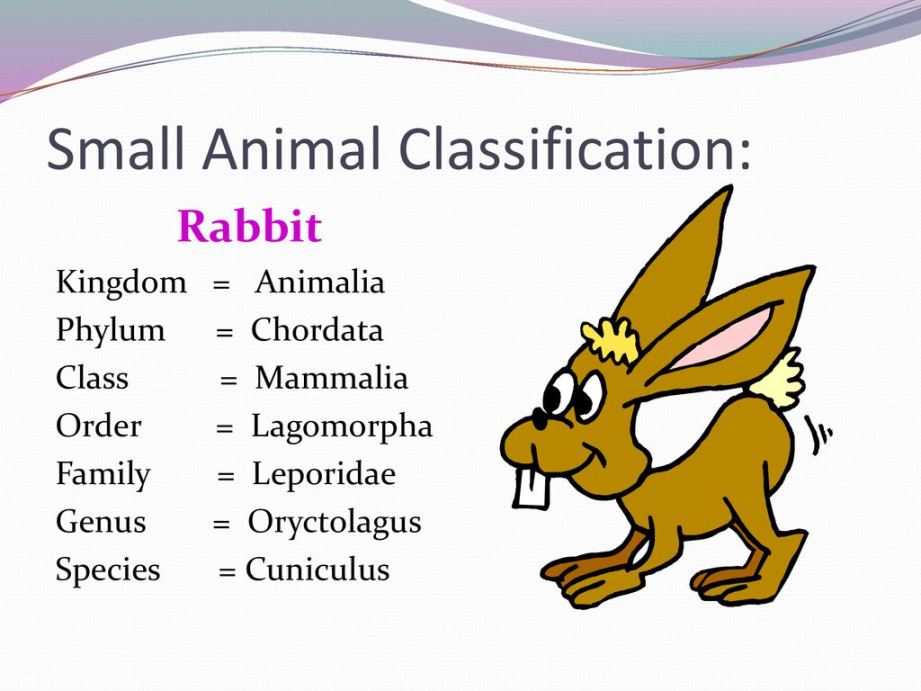What Are The 7 Levels of Classification For a Rabbit?
Rabbits are small mammals that belong to the family Leporidae. They are known for their long ears, soft fur, and hopping gait. From a scientific perspective, rabbits are classified into various levels based on their characteristics and evolutionary relationships. The classification system used for rabbits, as well as all other living organisms, is known as the Linnaean system of classification. This system was developed by the Swedish scientist Carl Linnaeus in the 18th century and is still widely used today.

1. Kingdom: Animalia
The first level of classification for a rabbit is the kingdom. Rabbits, like all other animals, belong to the kingdom Animalia. This kingdom includes all multicellular organisms that are capable of locomotion and obtaining food by consuming other organisms.
2. Phylum: Chordata
The second level of classification for a rabbit is the phylum. Rabbits belong to the phylum Chordata. This phylum includes all animals that possess a notochord, a hollow dorsal nerve cord, pharyngeal slits, and a post-anal tail at some point during their development. These characteristics are present in the early stages of a rabbit’s life.
3. Class: Mammalia
The third level of classification for a rabbit is class. Rabbits belong to the class Mammalia. This class includes all animals that have mammary glands, hair or fur and are warm-blooded. Rabbits, like other mammals, give birth to live young ones and nurse them with milk produced by their mammary glands.
4. Order: Lagomorpha
The fourth level of classification for a rabbit is the order. Rabbits belong to the order Lagomorpha. This order includes rabbits, hares, and pikas. Lagomorphs are characterized by their specialized teeth, with a pair of large incisors in the upper and lower jaws that continue to grow throughout their life.
5. Family: Leporidae
The fifth level of classification for a rabbit is the family. Rabbits belong to the family Leporidae. This family includes all rabbits and hares. Members of this family are characterized by their long ears, powerful hind legs adapted for hopping, and short tails.
6. Genus: Oryctolagus
The sixth level of classification for a rabbit is the genus. The most common domesticated rabbit, also known as the European rabbit, belongs to the genus Oryctolagus. This genus includes several species of rabbits that are native to Europe and Africa.
7. Species: Cuniculus
The seventh and final level of classification for a rabbit is the species. The European rabbit, which is the most widely recognized species, is scientifically known as Oryctolagus cuniculus. This species is found in various habitats across Europe and has been introduced to other parts of the world as well.
Frequently Asked Questions (FAQs)
1. What are some physical characteristics of rabbits?
Rabbits are known for their long ears, which can be as long as 10 centimeters or more. They also have powerful hind legs that allow them to hop and run quickly. Their fur is usually soft and can come in various colors, including white, brown, gray, and black.
2. Are all rabbits the same species?
No, there are several different species of rabbits belonging to different genera. The most common domesticated rabbit belongs to the genus Oryctolagus, while other species, such as the cottontail rabbits, belong to the genus Sylvilagus.
3. Can rabbits interbreed with other animals?
No, rabbits cannot interbreed with animals from different genera or families. While there may be some similarities in appearance or behavior between rabbits and hares, they belong to different genera and cannot produce offspring together.
4. How do rabbits fit into the ecosystem?
Rabbits play a crucial role in various ecosystems as both prey and herbivores. They are an important food source for predators such as foxes, coyotes, and birds of prey. Additionally, their feeding habits help control vegetation growth, which can have a significant impact on the ecosystem’s overall balance.
Related Articles…
Copyright Notice:
All images featured on this site are sourced from the internet, copyrights belong to respective owners. Should you own any image and require it to be removed, please contact us.